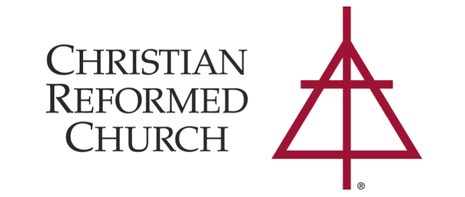Studying the Bible holds immense significance for individuals seeking spiritual growth, guidance, and a deeper understanding of their faith. As the sacred text of Christianity, the Bible serves as a source of wisdom, inspiration, and moral teachings. It offers profound insights into the nature of God, the origins of humanity, and the principles that govern human conduct. Whether you are a devout believer or someone curious about the world’s most influential book, delving into the Bible can be a transformative experience.
King James Version (KJV)
The King James Version, also known as the Authorized Version, holds a special place in the hearts of many believers. Published in 1611, it is one of the most influential English translations of the Bible. Its majestic language and poetic style have left an indelible mark on literature and culture. The KJV is known for its formal equivalence, aiming to stay as close to the original Hebrew and Greek texts as possible. Its archaic language, however, can pose challenges for modern readers.
New International Version (NIV)
The New International Version, first published in 1978, offers a balance between accuracy and readability. It aims to provide a clear and contemporary understanding of the biblical text. The NIV is highly regarded for its accessibility, making it a popular choice for both personal study and public reading. It underwent revisions in 1984 and 2011 to ensure precision and reflect evolving scholarship.
English Standard Version (ESV)
The English Standard Version is a modern translation that seeks to capture the beauty, clarity, and accuracy of the original biblical manuscripts. Published in 2001, it has gained recognition for its faithfulness to the original texts and its readability. The ESV is often favored by scholars, pastors, and those who value a more literal rendering of the biblical text.
New Living Translation (NLT)
The New Living Translation is designed to make the Bible accessible to a broad audience, providing a balance between accuracy and readability. It employs a dynamic equivalence approach, conveying the message of the original text in contemporary language. The NLT is known for its clarity and ease of understanding, making it suitable for new believers and those seeking a fresh perspective on the biblical narrative.
These are just a few examples of the many Bible versions and translations available. Each version has its own unique characteristics and aims to meet the diverse needs of readers. Whether you prefer a traditional, formal translation or a contemporary, accessible rendition, the Bible offers something for everyone. Exploring different versions can deepen your understanding of the biblical text and enrich your spiritual journey.
**Remember, the version you choose should align with your goals for study and personal preferences.** So, grab your favorite Bible version and embark on a transformative journey through the pages of this timeless book.

What is a Thinline Bible?
A Thinline Bible is a specific type of Bible that is known for its thin and lightweight design. It is popular among individuals who want a compact and portable option for carrying their Bible. The term “Thinline” refers to the slimness of the Bible’s pages, which are typically thinner than those of regular Bibles, allowing for a more streamlined and manageable size. Thinline Bibles are available in various translations and versions, catering to the diverse preferences of readers.
Thinline Bibles have their origins in the mid-20th century when publishers recognized the need for a more practical and convenient Bible format. They were developed in response to the desire for a Bible that could be easily carried and transported without compromising the readability and content of the text. The innovative design of Thinline Bibles revolutionized the way people engage with the Scriptures, making it more accessible and portable.
Advantages of using a Thinline Bible
There are several advantages to using a Thinline Bible:
- Portability: The slim and lightweight design of Thinline Bibles makes them highly portable, allowing readers to easily carry their Bible wherever they go. Whether you’re traveling, attending church, or studying in a coffee shop, a Thinline Bible can fit comfortably in a bag or even a pocket.
- Comfortable Reading: Thinline Bibles are designed to be easy to hold and read for extended periods. The thin pages and compact size make it effortless to navigate through the text, whether for personal study, devotionals, or group discussions.
- Less Bulk: Unlike thicker Bibles, Thinline Bibles take up less space on a bookshelf or in a bag. They are a practical choice for individuals with limited storage space or those who prefer a clutter-free environment.
- Variety of Translations: Thinline Bibles are available in a wide range of translations, allowing readers to choose the version that resonates with them the most. Whether you prefer the King James Version, New International Version, or any other translation, you can find a Thinline Bible that meets your needs.
- Enhanced Portability: Some Thinline Bibles feature additional features like built-in bookmarks, concordances, and maps, making them even more convenient for on-the-go reading and study.
Features and Characteristics of a Thinline Bible
Thinline Bibles possess several unique features and characteristics:
- Thin Pages: Thinline Bibles are known for their thin pages, which are designed to reduce the overall thickness of the Bible while maintaining readability. These pages are often made from high-quality materials to ensure durability and prevent tearing.
- Flexible Cover: Thinline Bibles typically have a flexible cover, such as bonded leather or imitation leather, which adds to their lightweight and flexible nature. The cover materials provide protection for the pages while allowing the Bible to easily fold and bend.
- Readable Text: Despite their slim design, Thinline Bibles feature clear and legible text. Publishers use advanced printing techniques and font sizes to ensure optimal readability, allowing readers to engage with the text without strain.
- Compact Size: Thinline Bibles are designed to be compact, often measuring around one inch or less in thickness, making them easy to carry and store. The dimensions of Thinline Bibles vary slightly between different publishers and editions.
Choosing the Right Thinline Bible
When it comes to selecting a Thinline Bible, there are several important considerations to keep in mind. From the type of binding and cover material to the font size and readability, finding the perfect Thinline Bible for your needs requires thoughtful evaluation. Additionally, comparing different brands can help you make an informed decision. Let’s explore these factors in more detail.
Considerations when selecting a Thinline Bible
One of the key consideration* when choosing a Thinline Bible is the type of binding. Thinline Bibles often come with two common binding options: sewn binding and glued binding. Sewn binding provides greater durability, flexibility, and longevity, making it a preferred choice for those who use their Bibles frequently or plan to pass them down through generations. On the other hand, glued binding is more cost-effective and suitable for occasional use. It’s important to consider your intended usage and how long you want your Thinline Bible to last.
Another important factor to consider is the cover material. Thinline Bibles can feature covers made of various materials, such as genuine leather, imitation leather, softcover, or even hardcover. Genuine leather offers a premium look and feel, while imitation leather provides an affordable alternative without compromising on durability. Softcover Bibles are lightweight and flexible, making them ideal for travel or casual reading. Hardcover Bibles, on the other hand, offer more robust protection but can be heavier and bulkier. Choosing the right cover material depends on your personal preferences and needs.
Factors to consider regarding font size and readability
Font size plays a crucial role in the readability of a Thinline Bible. Some readers prefer a larger font size for enhanced legibility, especially for those with visual impairments or reading difficulties. On the other hand, a smaller font size allows for a more compact and lightweight Bible, making it easier to carry and handle. Consider your own visual comfort and reading habits when deciding on the font size of your Thinline Bible. Additionally, pay attention to the typeface used, as certain fonts may be more or less readable depending on personal preference.
The quality of paper used in a Thinline Bible is another aspect to consider for optimal readability. Thicker, acid-free paper is generally preferred as it minimizes show-through and increases the overall durability of the Bible. Additionally, opaque paper helps prevent distractions from text on the reverse side of the page. Take note of the paper quality** when evaluating different Thinline Bibles to ensure a pleasant reading experience.
Comparison of popular Thinline Bible brands
When it comes to popular Thinline Bible brands, several names stand out. The Crossway ESV Thinline Bible is renowned for its accuracy and readability, featuring a variety of cover options and sizes. The Zondervan NIV Thinline Bible is highly regarded for its clear, modern translation and portable design. Another notable brand is the **Holman Christian Standard Bible (HCSB), which offers a balance between accuracy and readability. These are just a few examples of the many options available in the market. Take the time to research and compare different brands** to find the one that best aligns with your preferences and needs.
Choosing the right Thinline Bible is a personal decision that depends on various factors, including binding type, cover material, font size, and brand. By considering these factors and exploring different options, you can find a Thinline Bible that suits your lifestyle, enhances your reading experience, and deepens your spiritual journey.

Tips for Using a Thinline Bible
Once you’ve chosen the perfect Thinline Bible for your needs, it’s important to know how to make the most of it. Here are some tips for using and caring for your Thinline Bible:
Proper care and maintenance
Taking good care of your Thinline Bible is essential to ensure its longevity and readability. Here are some tips to help you preserve your Bible:
- Handle your Bible with clean hands to prevent dirt and oil from transferring onto the pages.
- Store your Thinline Bible in a protective cover or case to prevent damage from dust, moisture, or accidental spills.
- Avoid exposing your Bible to extreme temperatures, as this can cause the pages to become brittle or warp.
- Use a bookmark or Bible tabs to easily locate specific passages without bending or folding the pages.
- Regularly clean your Thinline Bible with a soft, dry cloth to remove any dust or debris. Avoid using liquid cleaners or solvents.
Enhancing study with additional tools and resources
While the compact size of a Thinline Bible makes it convenient for carrying, it may lack some features found in larger study Bibles. However, you can enhance your study experience by utilizing additional tools and resources:
- Invest in a Bible concordance or study guide to help you delve deeper into specific topics, words, or themes.
- Consider using Bible software or apps that offer commentaries, cross-references, and other study aids.
- Make use of online resources, such as Bible study websites or podcasts, to gain insights from biblical scholars and teachers.
- Join a Bible study group or attend a Bible study class to engage in discussions and gain different perspectives.
Making the most of the compact size
One of the advantages of a Thinline Bible is its slim and lightweight design, making it ideal for travel or daily carry. Here are some ways to maximize the compact size:
- Take advantage of the portable nature of your Thinline Bible by bringing it with you wherever you go. This allows you to read and reflect on God’s Word during your commute, lunch breaks, or while waiting in line.
- Consider using a smaller notebook or journal alongside your Thinline Bible to jot down your thoughts, prayers, or sermon notes.
- Explore creative ways to mark important passages or add personal annotations without cluttering the pages. Colorful sticky notes or Bible journaling techniques can be used to highlight verses or create visual representations of your reflections.
Utilizing study features and cross-references
Although Thinline Bibles may not have extensive study features, they often include helpful tools for deeper study**. Here are some features to look for and utilize:
- Cross-references: These references point you to related verses or passages, allowing you to explore connections and gain a more comprehensive understanding of the biblical text.
- Footnotes: Footnotes provide additional context, explanations, or alternate translations for specific words or verses.
- Concordance: Some Thinline Bibles include a concordance, which is an alphabetical index of key words in the Bible. This resource helps you locate passages related to specific topics or themes.
- Maps and charts: Many Thinline Bibles feature maps and charts that provide geographical and historical context, enriching your understanding of the biblical narrative.
By following these tips and utilizing the features of your Thinline Bible, you can deepen your study and engagement with God’s Word in a compact and convenient format.

Rockin’ the faith, one verse at a time!
Growing up, the Bible’s stories deeply impacted me. Now, with over 15 years of preaching experience, I blend timeless teachings with modern technology, making them relevant for today’s world.
Bible Hub Verse is my platform to share historical insights and thought-provoking articles, exploring both familiar and uncommon Christian topics. My passion is building a welcoming online space for everyone to learn, grow in their faith, and discover the Bible’s enduring message.
Join the journey!
God bless you.









